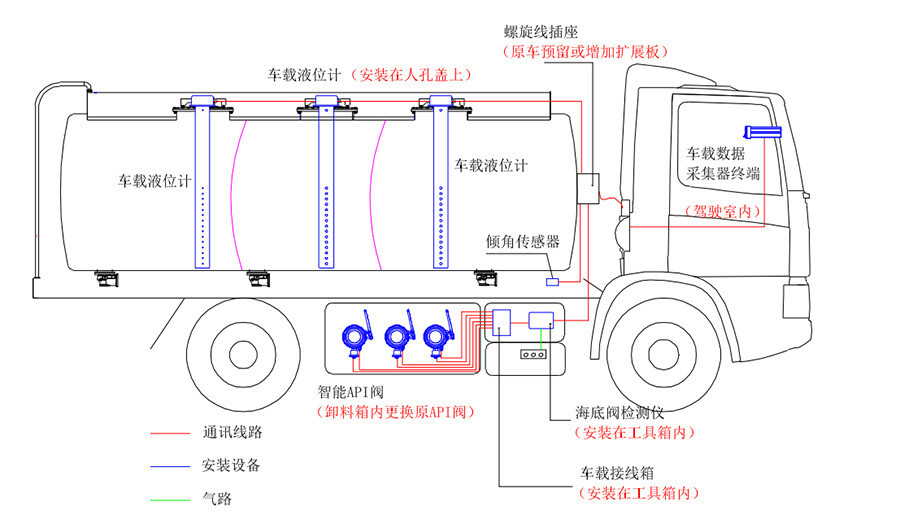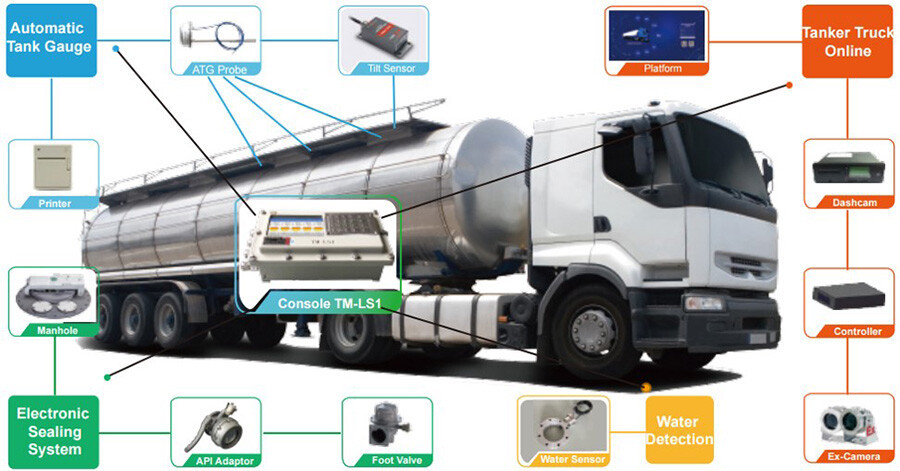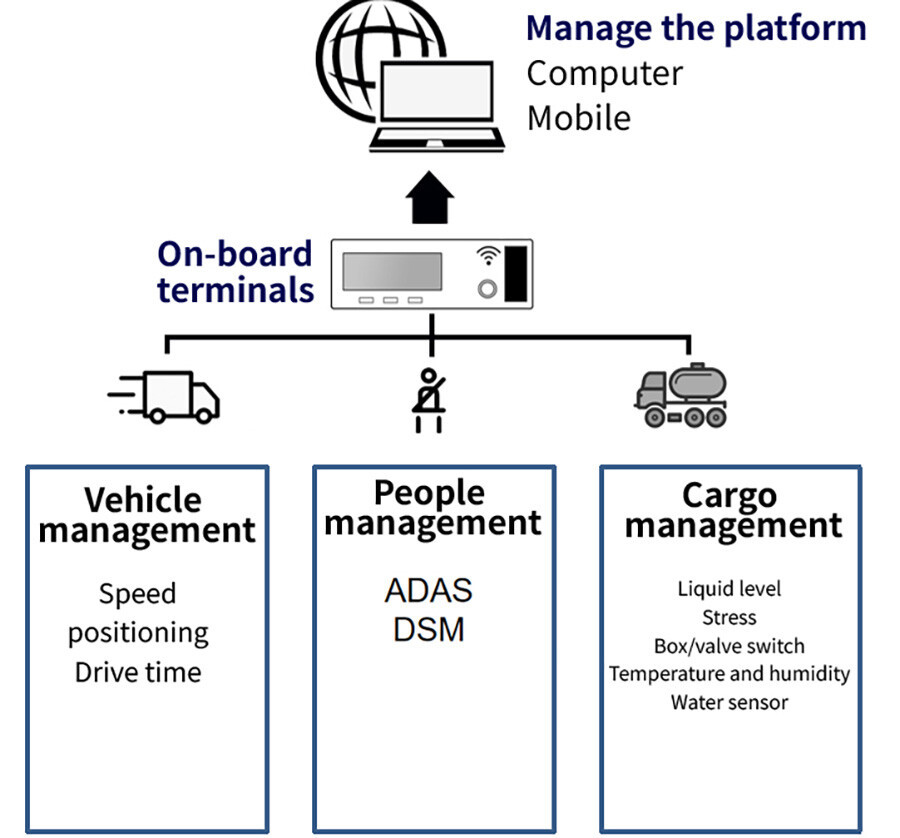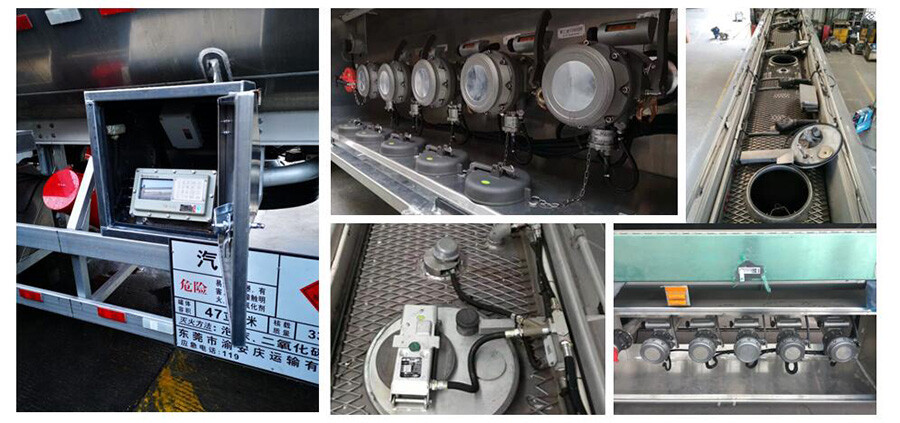
Background
The issues of quantity, quality, efficiency and safety in the process of fuel transportation have always been a common topic in the industry. The fuel transportation process is divided into four processes: fuel depot loading, fuel tanker transportation, fuel unloading at the filling station, and fuel receiving at the filling station. Among them, the data management of the two links of fuel depot loading and filling station receiving has been automated and intelligent, while the fuel tanker transportation and the filling station unloading process are relatively backward, relying on manual recording and identification.

In these four processes, each Petro company has been seeking to solve a common problem: the fuel received by the filling station does not match the original data of the oil depot. The reasons for analysis may be as follows:
1. Loading in fuel depot: volume difference caused by inaccurate density measurement, error in oil delivery;
2. Fuel tanker transportation: two different measuring rulers can count the transportation loss and overflow, stealing oil change during transportation and natural loss and overflow;
3. Fuel unloading at the filling station (tank truck): the fuel in the tank truck or in the pipeline is not unloaded;
4. The filling station receives fuel: the buried tank volume table is inaccurate.
For the two problems 2 and 3, when there is no electronic equipment installed on the tanker, it is completely dependent on personnel to identify and compare. This method lacks data support, has poor consistency, low efficiency, low accuracy, and is greatly affected by human beings. To solve the problem, you need to find the problem through data first, so it is very important to use sensors to collect data in the two links of 2 and 3.
The European standard BS EN 15208-2014: Tanks for transport of dangerous goods—Sealed parcel delivery systems—Working principles and interface specifications stipulates that the intelligent monitoring system during the sealed transportation of dangerous chemicals helps the quantity, quality, Efficiency and safety management.
In China, Shell's joint ventures and CNPC and BP's joint ventures have taken the lead in adopting the OKET intelligent transportation monitoring solution for management. (2) liquid level monitoring of each tank sub-silo, and (3) emptying detection.
PetroChina Transportation Company has nearly 9,000 tankers for the transportation of refined oil, which is the largest transportation fleet in China. These tankers have been installed with video surveillance and active safety equipment, which has solved the safety problems of vehicles and personnel, but the intelligent monitoring and management of goods is still lacking.
OKET solution
With tank truck ATGs as the center, OKET has designed a system of fuel intelligent distribution and metering management solutions:
※ The volume V20 at the standard temperature after fuel loading and before unloading at the filling station is measured through the tank truck ATGs, and the loss during the transportation process are automatically counted;
※ During the transportation process, we can comprehensively identify whether there is any abnormal loss during the transportation process by monitoring the valve switch combined with the liquid level fluctuation;
※ Through the emptying detection system, it is ensured that all the fuel in the tanker enters the buried underground tank when the fuel is discharging, so as to avoid the blind spot of artificial vision.
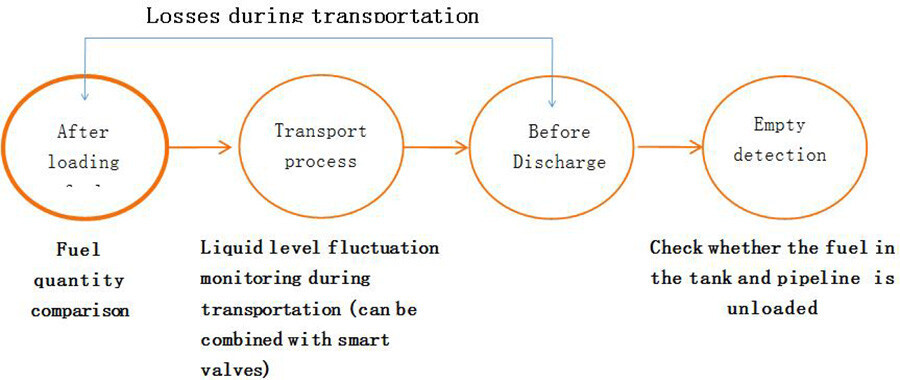
System function
(1) Automatically measure the fuel height, temperature and tank inclination in the tanker;
(2) Automatically generate V20 after loading in depot and before unloading in filling station, and automatically calculate transportation loss;
(3) Real-time monitoring of liquid level and API valve switches during transportation, alarms can be set for abnormal fluctuations, and videos before and after the abnormality can be automatically captured by linkage with video for re-view;
(4) The integrated water sensor can distinguish whether there is water in the tank and in which link the water enters;
(5) When unloading at the filling station, check whether the fuel in the tanker is emptied to ensure that all enters the under-ground tank;
(6) The whole process data is automatically generated and automatically uploaded to the management platform to form reports, abnormal alarm reports, etc. for daily management and statistics;
(7) Through the sensor to identify whether the fuel in the tank is transported in a closed manner and whether it is discharged at the filling station, so as to ensure the smart monitoring during the transportation process.
